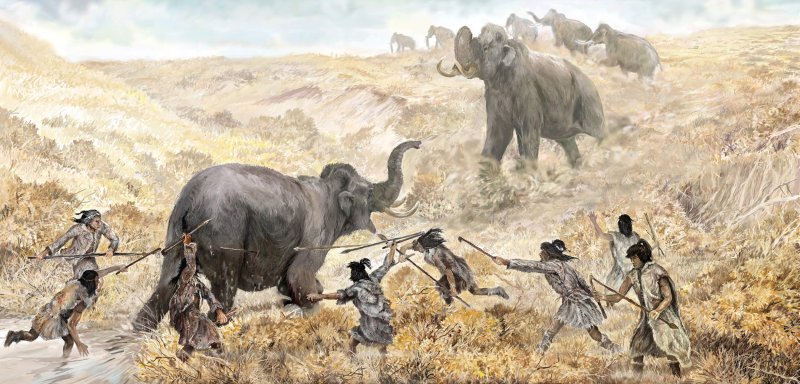Tens of thousands of years ago, two gigantic ice sheets smothered the northernmost parts of what has since been named North America.
…
Genetic studies, based on ancient remains, [suggested] that once the first American Indians got south of the ice, 14,600 to 17,500 years ago, they split into two main branches. One stayed north, giving rise to the Algonquian-speaking peoples of Canada. The other headed south, giving rise to the widespread Clovis culture, and to Central and South Americans. That’s a very rough outline, but a new study from J. Víctor Moreno-Mayar and his colleagues fleshes it out. They showed that whatever happened south of the ice, it happened fast.
They sequenced the genomes of 15 ancient humans, who came from sites ranging all the way from Alaska to Patagonia. One person from Spirit Cave in Nevada and five from Lagoa Santa in Brazil were especially instructive. They were all just over 10,000 years old, and though they lived 6,300 miles apart, they were strikingly similar in their DNA.
…
All this suggests that, about 14,000 years ago, the southern lineage of early American Indians spread through the continent with blinding speed.
…
This pattern confirms the suspicions of archaeologists, whose finds had long suggested that humans suddenly appeared throughout the Americas, from about 13,000 years ago onward. “You can now see that in the genetics,” Moreno-Mayar says.
Read full, original post: The Extremely Fast Peopling of the Americas































